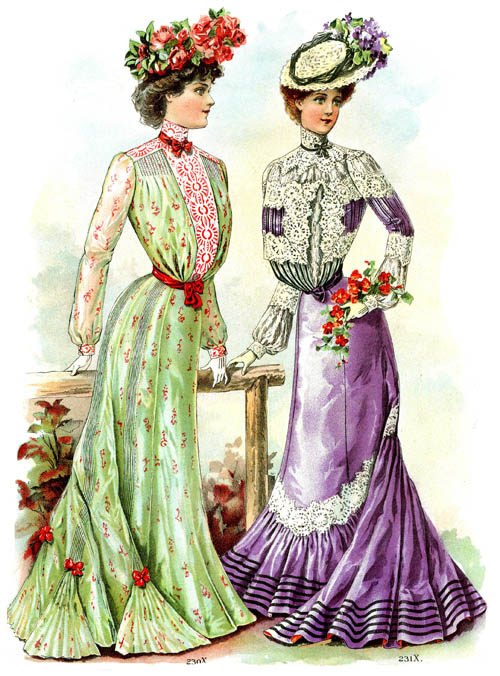|
Home > The Victorian Woman > Women's Issues > Women's Suffrage
While women made great strides in gaining a host of rights during the Victorian era, one that they were not destined to achieve (at least in Britain and America) was the right to vote. Actually, most of Britain's colonies granted their women the right to vote before the turn of the century, but this wasn't to happen in Britain until 1918 and America in 1920. A host of arguments were put forward on both sides of the cause. The primary argument against women's suffrage was that women were too "delicate" to vote - and women argued in return that if they were strong enough to bear children, chop wood and keep a family fed, how difficult was it to cast a vote at a polling booth? The "delicacy" argument actually applied more to the concept that a person who had the right to vote also had the right to participate in politics - even to run for election - and women, of course, were far too frail to hold political office! Others argued that if one could not fight for one's country, one should not be able to vote. Here's a look at the suffrage battle in the Victorian era.
- Ought American Women to Have the Right of Suffrage?
(Godey's, 1867)
- This author thinks not...
- Women's Issues
(Godey's, 1867)
- A variety of short items on women's issues such as suffrage, work, etc.
- Facsimile of the Notes of a Speech by John Bright
(The Strand, 1891A)
- An 1876 speech against women's suffrage.
- The New Woman-Suffrage Movement
(Century Magazine, 1894B)
- Woman Suffrage
(Century Magazine, 1894B)
- A debate over suffrage, with "The Right and Expediency of Woman Suffrage," by George F. Hoar; "The Wrongs and Perils of Woman Suffrage," by J.M. Buckley; a postscript by each addressing the other's comments; and an editorial on the topic.
- The Woman Question Once More (editorial)
(Century Magazine, 1895A)
- "One would suppose that to the task of convincing mankind of her equal rights and competence, she would scarcely need to add that of first convincing herself."
- What Women Can Do Best, by Clara Temple Leonard
(Century Magazine, 1895A)
- Interesting arguments about suffrage. The author points out that many women take no interest in politics and believe all parties are corrupt, but that politics will be somehow "purified" when women vote. Women, she notes, are no different men, subject to the same strengths and weaknesses of character. She does seem to believe that women can have more impact in influencing the nation through charity and public works than they may have by voting.
- The New Lady, by Rebecca L. Leeke
(Century Magazine, 1896A)
- "The woman of the new school claims rights that are separate from the rights of man, and opposed to his; the lady of the old school claimed no rights that were in conflict with the rights of man, and in defense of her own rights she desired the protection that is due to her sex from men... That she does not receive it to the same extent now is the fault of the advanced woman, who scorns it..."
|
Visit Our Victorian Shop
for:
Books
Coloring Books
Beautiful Spiral Journals
Holiday Greeting Cards
|
|


 Discover thousands of Victorian images in our
Discover thousands of Victorian images in our